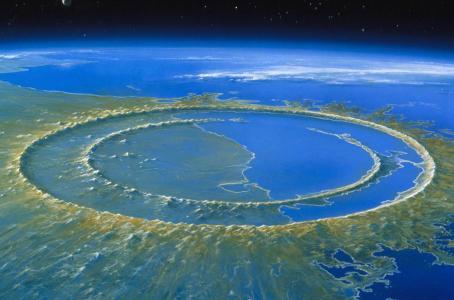CHICXULUB PUERTO — Three out of four species disappeared when a meteorite fell on the Yucatan peninsula 66 million years ago, according to a scientific group studying the peak rings of the Chicxulub crater.
“The crater is part of the unique set of structures on the planet that carry much of the record of the evolution of Earth and life. Impact caused a series of global effects on Earth affecting life support systems and causing the extinction of a large group of species,” explained Dr. Jaime Urrutia Fucugauchim, UNAM researcher and member of the international team in an interview with El Financiero.
Since last April, the group of 32 specialists from different countries has made the first excavation in the ring of peaks, the only such system on Earth. Its goal is to analyze the evolution of planetary surfaces and understand what happened and how similar impacts have been able to affect other planets.
“The results of the drilling confirm that we have rocks that come from the deep part and that they are to depths of about 20 kilometers and these are raised by the impact, that is what forms the ring of peaks, mechanisms of formation of these structures in other bodies of the solar system,” explained Dr. Urrutia.
“If you see the Moon, everything you see on the Moon is impact craters of different sizes,” Urrutia said during a morning news conference at UNAM to explain the first findings of the investigation.
These formations have been observed on the Moon, Mars and Mercury, but they had never been studied in the Earth until the recent intervention, in which excavation techniques similar to those used in the petroleum industry were used and which cost $10 million.
CLIMATE CHANGE 55 MILLION YEARS AGO
One of the lines of research that was opened after the analysis of the rocks collected is that the planet lived a process of climate change 55 million years ago.
“We have a record of the climatic changes from the impact, which has allowed us to study and make a paocloclimatic reconstruction, and one of the events occurred relatively near the bottom of the crater 55 million years ago where average temperatures (because of the impact) increased substantially,” said Urrutia.
According to Ligia Pérez Cruz, a UNAM specialist who worked on excavation platforms in the Yucatan peninsula, the impact of the asteroid led to abrupt climate change, from a cooling to a warming, then there was a stabilization, but 10 million years later there was an event that generated a non-massive extinction of the microfauna of the seabed, which is currently happening with corals.
“These are global warming events that are analogous to what we have today,” said Pérez Cruz.
Urrutia said the interesting thing about studying this phenomenon is the analysis of how terrestrial systems react to this type of abrupt climate change and also understand what they can generate in the long term.
This line of study is headed by the UNAM.
Source: elfinanciero.com.mx



